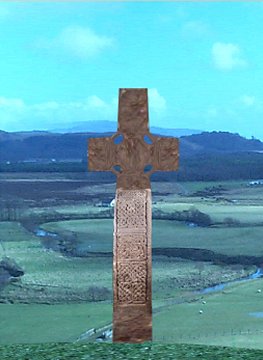
Department of Archaeology, University of Glasgow, Glasgow G12 8QQ, 0141 330 5690
s.jeffrey@archaeology.arts.gla.ac.uk, SEMSS Homepage and Resource page.
Cite this as: Jeffrey, S. 2001 A Simple Technique For Visualising Three Dimensional Models in Landscape Contexts, Internet Archaeology 10. https://doi.org/10.11141/ia.10.3

One of the Scottish Early Medieval Sculptured Stones project (SEMSS) project's objectives is to generate accurate three dimensional models of these monuments using a variety of data capture techniques from photogrammetry to Time of Flight laser measurement. As the landscape context of these monuments is often considered crucial to their understanding, the model's ultimate presentation to the user should include some level of contextual information. In addition there are a number of presentation issues that must be considered such as interactivity, the relationship of reconstructed to non-reconstructed sections, lighting and suitability for presentation over the WWW.
This article discusses the problem of presenting three dimensional models of monumental stones in their landscape contexts. This problem is discussed in general, but special attention is paid to the difficulty of capturing landscape detail,interactivity, reconstructing landscapes and providing accurate representations of landscapes to the horizon. Comparison is made between 3D modelling packages and Internet specific presentation formats such as VRML and QTVR.
The proposed technique provides some level of interactivity as well as photorealistic landscape representation extended to the horizon, without the need for a complete DEM/DTM, thereby making file sizes manageable and capable of WWW presentation. It also allows for the issues outlined to be tackled in a more efficient manner than by using either 3D modelling or QTVR on their own.
I would like to acknowledge the advice and assistance given to me by Ewan Campbell, Jeremy Huggett, and Mike Pringle in both the form and content of this article.
Go to article Table of Contents
© Internet Archaeology
URL: http://intarch.ac.uk/journal/issue10/jeffrey_index.html
Last updated: Wed May 16 2001